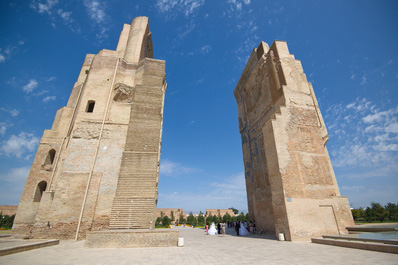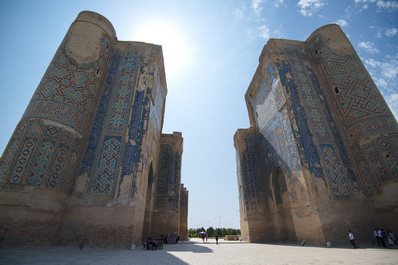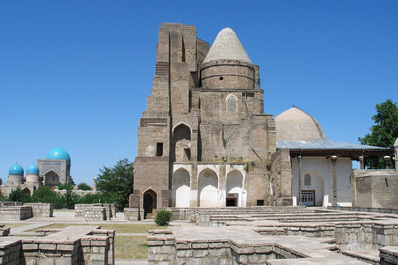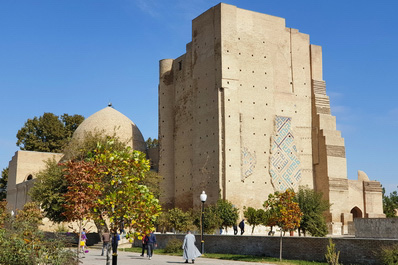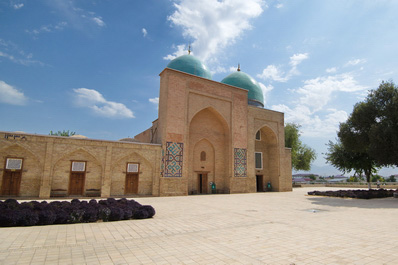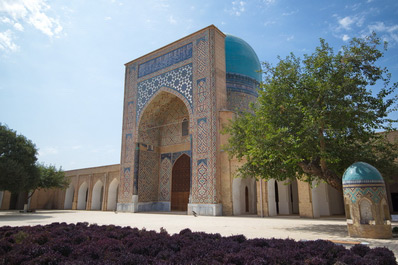Historical and architectural monuments of Shakhrisabz
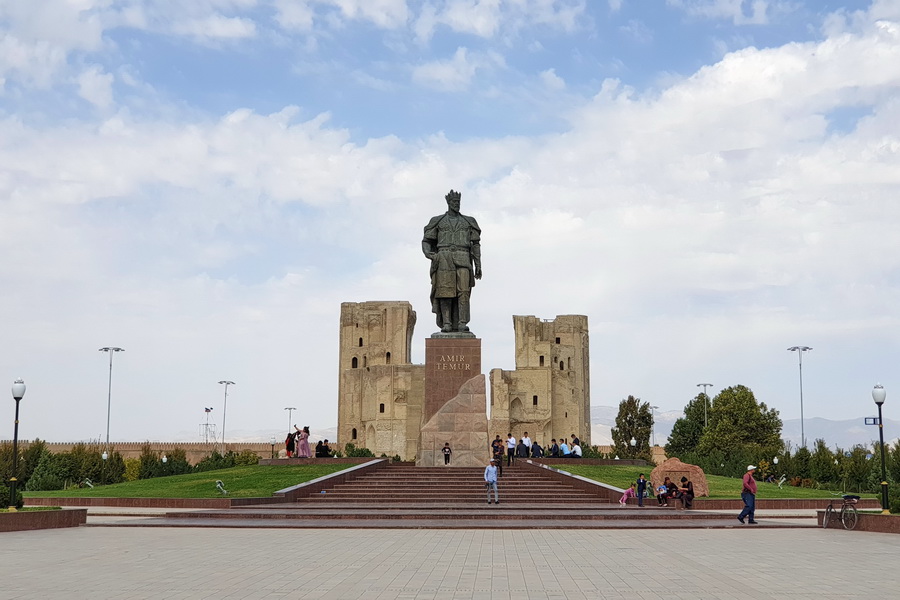
Shahrisabz is one of the oldest cities in Uzbekistan, renowned as the birthplace of the great commander Amir Timur (Tamerlane). In the heart of the city stand several key historical monuments that reflect the grandeur of his reign. Among them are the Ak-Saray Palace, a monumental structure with a towering portal; the Dor-Us Saodat mausoleum complex, the burial site of members of the Timurid dynasty; and the Dor-Ut Tilovat ensemble, which includes a mosque and the tombs of prominent medieval theologians. In this article, we explore what makes these landmarks of Shahrisabz remarkable and what visitors should know before seeing them.
Ak-Saray Palace
Ak-Saray Palace is a striking architectural monument that reflects both the ambitions of Amir Timur and the might of his empire. Constructed in the late XIV to early XV centuries in his hometown, it was envisioned as the ruler’s principal residence. Timur intended its opulence to surpass even the masterpieces of Samarkand, a vision successfully realized by the era’s finest architects. Despite the damage sustained over the past seven centuries, the palace’s majestic ruins still awe with their monumental scale.
At its peak, Ak-Saray was vast: the central courtyard stretched 125 meters wide and 250 meters long, while the main gateway soared to 70 meters. The facades were adorned with intricate mosaic patterns, and the walls featured calligraphic tile inscriptions. The interior dazzled with ornamental frescoes, gilded ceilings, and carved columns that emphasized the palace’s status. One notable engineering feat was a rooftop pool from which water flowed in cascades. This water was channeled into the palace through a sophisticated system of lead pipes originating from the Takhtakara mountain pass - a remarkable achievement in medieval hydraulic engineering.
Following Timur’s death, the city entered a period of decline, and the palace fell into disrepair. Under the Shaybanid dynasty, it was completely abandoned, and successive earthquakes reduced it to monumental ruins. Nevertheless, even the surviving fragments provide a powerful sense of the palace’s former grandeur.
Dor-Us Saodat
The Dor-Us Saodat memorial complex, built at the turn of the XIV and XV centuries, is among the most significant architectural legacies of the Timurid period. It is the final resting place of Timur’s sons, Jahongir and Umar Shaykh. The site also includes an underground crypt originally intended for Timur himself. However, after his death, his remains were transferred to Samarkand and interred in the Gur-Emir Mausoleum.
The tomb of Jahongir, Timur’s eldest son and designated heir, is especially elaborate. Its walls are clad in turquoise tiles and ornate calligraphic panels. Adjacent to the mausoleum is a mosque with a spacious iwan supported by carved wooden columns. In its courtyard grow ancient plane trees, some over 700 years old, adding a sense of serenity. In contrast, the tomb of Umar Shaykh is more restrained in style, yet it still features key elements of Timurid architectural tradition.
Dor-Ut Tilovat
The Dor-Ut Tilovat architectural ensemble, dating to the XIV-XV centuries, is another outstanding monument of the Timurid era. It was built in honor of Shamsuddin Kulala, Amir Timur’s esteemed spiritual mentor, who greatly influenced the ruler’s worldview. Initially a modest mausoleum, the site evolved over time into a large religious and memorial complex.
The ensemble’s focal point is the Kok Gumbaz Mosque, commissioned in 1435 by Ulugh Beg, Timur’s grandson. Topped with a vast turquoise dome, the mosque features a portal decorated with majolica tiles in intricate geometric designs. Nearby stands the mausoleum of Shamsuddin Kulala, a small yet elegant structure built in the classical style of Central Asian Islamic architecture. The surrounding buildings house the tombs of other spiritual leaders and nobles of the Timurid period. Retaining much of its original form, the Dor-Ut Tilovat complex remains a vivid testament to the cultural and spiritual richness of Shahrisabz under Timur’s rule.


